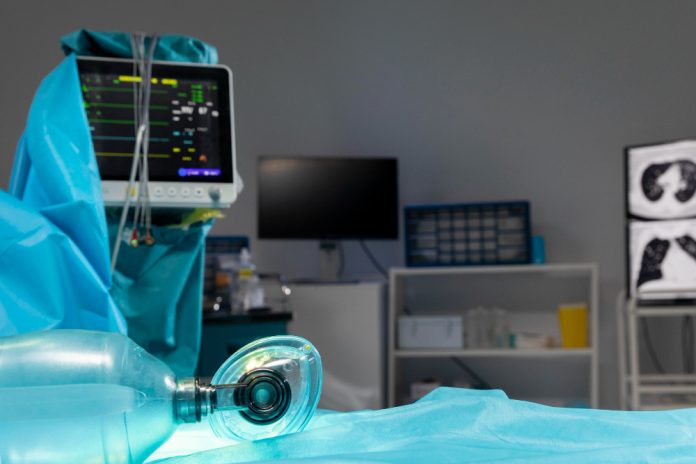The Union Cabinet adopted the National Medical Devices (NMD) Policy on May 2, 2023. In the years to come, it seeks to reduce India’s dependency on imports to around 30%. The NMD Policy seeks to strengthen the Indian medical device industry by fostering innovation and international competitiveness, with a patient-centric strategy to fulfill evolving healthcare demands. The sector will be supported in this endeavour by top-notch infrastructure, a favourable ecology, efficient regulatory procedures, and a trained workforce. Currently, 80–85% of medical devices supplied in India, mostly high-end ones, are imported, with indigenous producers concentrating on low-priced, low-tech goods like consumables and disposables. The government aims to make India one of the top five global manufacturing centres, capturing a 10-12% share of the expanding global market in the next 25 years, minimize reliance on imports, and promote export-oriented production of high-quality, reasonably priced products for Indian hospitals and laboratories.
The initiative also seeks to raise medical device expenditure in India per citizen. In addition to reducing imports, the program aims to lower the cost and increase accessibility to medical gadgets, which are currently costly. This will guarantee greater utilization throughout hospitals, better healthcare, and more inexpensive treatment. It is expected to boost the Medical Devices Sector’s growth from its current value of USD 11 billion to USD 50 billion by 2030.
The National Medical Devices Policy puts forth a plan to accomplish the following goals:
- Access to high-quality medical equipment for everyone to ensure everyone receives superior medical care.
- Increase local production potential and acceptance of novel technologies to lower the cost of medical equipment.
- Make certain that the quality of the goods produced in India boosts their position, acceptance, and competitiveness worldwide.
- Improved clinical results by earlier illness detection and more precise treatment, leading to a higher quality of care.
- Provide a healthier lifestyle through the widespread use of medical devices in early screening, diagnosis, and treatment of illnesses.
- To stay up with the times, create a dynamic environment that encourages and supports innovation in the medical device sector. Along with the precision and personalized care for a range of healthcare needs, such as preventive, promotive, diagnostic, curative, rehabilitative, geriatric, and palliative care, this includes the development of technology-driven medical devices that make use of advancements like miniaturization, nanotechnology, telecommunication technologies, IoTs, and AI.
- Develop a flexible supply chain that can survive interruptions in the supply of raw materials, and establish strong domestic manufacturing capabilities for medical devices, including the manufacture of components and ancillary industries.

What are the Key Features of National Medical Devices Policy 2023?
- The licensing of medical devices will be done through a “Single Window Clearance System” in order to streamline commercial and research operations and preserve a balance between patient safety and product innovation. The Ministry of Electronics and Information Technology (MeitY) and the Department of Animal Husbandry & Dairy (DAHD) are just two of the departments and organisations involved in this system.
- The government intends to build sizable medical device parks close to economic zones to support the expansion of the medical device sector. These parks will be established in cooperation with state governments and business partners and will feature top-notch infrastructural facilities. Under the authority of PM Gati Shakti, the creation of these parks will take place in accordance with the National Industrial Corridor Programme and the planned National Logistics Policy 2021, with the goal of enhancing confluence and cooperation with the medical device industry.
- The goal of the National Medical Devices Policy is to encourage research and development in India’s market for medical devices. The proposed strategy calls for the creation of innovation hubs, plug-and-play infrastructures, centres of excellence in academic and research institutions, and start-up assistance programs. The planned National Policy on R&D and Innovation in the Pharma-MedTech Sector will be complemented by this policy.
- It also emphasizes drawing capital to the Indian medical equipment market. In order to supplement current initiatives like Make in India, the Ayushman Bharat program, Heal-in-India, and the Start-up mission, the strategy promotes private investments and Public-Private Partnerships (PPP). The expansion of the medical device business is supported by investment from venture capitalists.
- The policy places a focus on offering skilling, reskilling, and upskilling programs through the Ministry of Skill Development and Entrepreneurship in order to produce a trained workforce in the medical device industry. In order to create a trained workforce for cutting-edge technologies, manufacturing, and research, it also intends to encourage the construction of medical device-specific courses in already-existing educational institutions.
- The National Medical Devices Policy recommends forming an Export Promotion Council to make it easier to address concerns with market access for the medical device industry in order to strengthen brand positioning and raise awareness.































